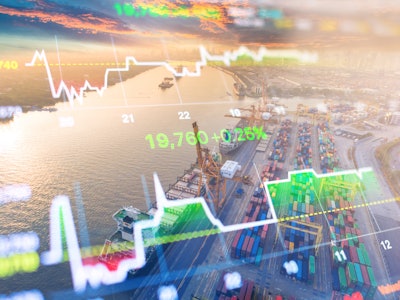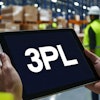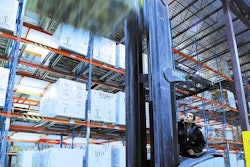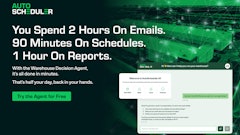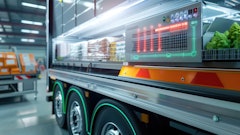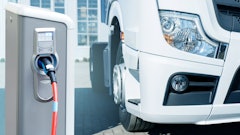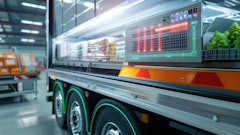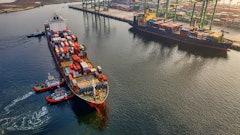Food from all over the world is available to today's consumers. This blessing also creates greater complexity, which brings challenges into your supply chain. The more time a product spends in transit, the greater the risk of it being damaged—especially if the product is perishable or sensitive to external conditions.
What is not yet fully defined is how much supply chain visibility is adequate? For example, do we go down to the product level or caseload level in terms of connectivity? We live in a connected world where visibility and reporting are essential parts of the management process, and most providers are already accustomed to some level of visibility. In today’s world, we’re seeing an unprecedented amount of ways to connect. It seems everything these days has a modem and the capabilities for connectivity. So where do you draw the line? How much visibility is enough? Too much can become overwhelming.
Visibility can come in different layers. In the transportation sector, many new reefers come with the telematics already plugged into the unit by the manufacturer, yet this added cost only provides a limited view. For instance, when a reefer shuts off, so does the visibility into the box. Having the ability to add additional sensors along with the reefer data adds another level of visibility, and these sensors allow you to add as many points as needed. Data loggers can provide another layer, but the real key is connecting the multiple layers and turning the resulting data into actionable insights delivered in an easily digested format.
Food from all over the world is available to today's consumers. This blessing also creates greater complexity, which brings challenges into your supply chain. The more time a product spends in transit, the greater the risk of it being damaged—especially if the product is perishable or sensitive to external conditions.
What is not yet fully defined is how much supply chain visibility is adequate? For example, do we go down to the product level or caseload level in terms of connectivity? We live in a connected world where visibility and reporting are essential parts of the management process, and most providers are already accustomed to some level of visibility. In today’s world, we’re seeing an unprecedented amount of ways to connect. It seems everything these days has a modem and the capabilities for connectivity. So where do you draw the line? How much visibility is enough? Too much can become overwhelming.
Visibility can come in different layers. In the transportation sector, many new reefers come with the telematics already plugged into the unit by the manufacturer, yet this added cost only provides a limited view. For instance, when a reefer shuts off, so does the visibility into the box. Having the ability to add additional sensors along with the reefer data adds another level of visibility, and these sensors allow you to add as many points as needed. Data loggers can provide another layer, but the real key is connecting the multiple layers and turning the resulting data into actionable insights delivered in an easily digested format.
Capture, Store and Act On Your Data
Every day, visibility helps people drive efficiency and cut costs within the supply chain. With so many connected devices it’s important to know where to look for the most value. You want to capture your temperature data because it’s required and, more so, you want the ability to save a loss if there is an issue that can easily be corrected. Capturing this data can help you stay on top of the constantly changing landscape of regulations and compliance.
If you also export products, you are familiar with the complexity of trade agreements and government tariffs. Transportation has become more regulated as a result. Technology and its visibility into the supply chain gives your team of experts the ability to quickly anticipate, respond and adapt to any new regulations.
Benefits of Complete Cold Chain Visibility
A supplier with visibility into its cold chain lessens the chances of business disruptions. Visibility enhances the ability to quickly respond to any needs throughout the chain, such as equipment failure or human error. A key to cold chain visibility is the ability to ensure you are keeping up and maintaining compliance with the latest regulations involving food and its transport.
With the right infrastructure set in place, you can gain transparency across every stage of your cold chain, while at the same time reducing costs, improving performance and reducing costly errors. An essential part of visibility is the data analytics it produces. An effective data analytics strategy can unite sources of information and provide actionable intelligence. Likewise, an organized data structure can provide the necessary tools needed when facing an audit or simply to improve the speed and accuracy of decision making processes. Many companies are increasingly leveraging cloud platforms to store and process huge data sets, and some are using a hybrid system that combines legacy homegrown systems with cloud infrastructure. Visibility of important data provided by exception-based and conditional-based alerts enable companies to then also manage by exception.
Complete cold chain visibility is not an easy task, yet there’s a bright side. Implementing the proper tools and adopting new technologies can enable you to leverage new tools, such as blockchain and AI, which can deliver a competitive advantage that separates you from the competition.
